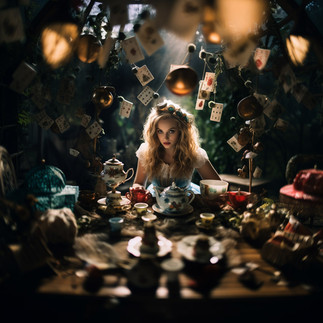The Rise of AI-Generated Images: Pros and Cons
- Simon McDowell

- Oct 27, 2022
- 3 min read
Updated: Jul 23, 2023

In the fast-paced world of design, the quest for visually captivating and authentic images is a constant challenge. For years, stock imagery has served as a convenient solution for many creatives seeking visuals for their projects. However, as technology advances, a new contender has entered the scene – AI-generated images. This cutting-edge technology is revolutionizing the way we approach visual content, offering both promising opportunities and potential drawbacks. In this blog post, we'll explore the use of AI in creating images and its potential impact on the future of stock imagery.
Pros:
1. Infinite Creativity AI-powered image generators have the ability to produce an infinite variety of images. With algorithms learning from vast datasets, AI can generate diverse visuals tailored to specific requirements, providing unparalleled creative flexibility.
2. Time and Cost Efficiency Creating custom images or purchasing high-quality stock imagery can be time-consuming and expensive. AI-generated images offer a cost-effective and efficient alternative, significantly reducing production time and costs.
3. Unique Visuals AI allows designers to break free from the limitations of traditional stock imagery. By generating unique visuals, AI provides a competitive edge, helping brands stand out in a saturated market.
4. Customization AI-generated images can be easily customized to fit a brand's identity, target audience, and specific design needs. This level of personalization enhances brand consistency and strengthens visual storytelling.
Cons:
1. Lack of Originality While AI offers vast creative potential, there's a concern about the risk of homogeneity. As AI becomes more widely adopted, there might be a surge in similar-looking visuals, leading to a lack of originality across various projects.
2. Ethical Considerations AI-generated images raise ethical questions, especially in terms of authenticity and representation. There is a risk of AI unintentionally perpetuating stereotypes or creating misleading visuals.
3. Human Touch Stock imagery often captures the human touch, portraying authentic emotions and experiences. AI-generated images, while impressive, might struggle to replicate the same level of emotional depth and genuine connection.
4. Limited Complexity AI-generated images work best for straightforward visual concepts. Complex or abstract ideas may still require human creativity and intuition to convey the intended message effectively.
Embracing AI: Image Generators Making a Splash
Artbreeder: With its impressive deep learning algorithms, Artbreeder creates stunning images by blending art styles and inspirations from a diverse range of artists.
GANpaint Studio: This AI-powered tool allows you to "paint" or edit images, changing elements, backgrounds, and even seasons with just a few clicks.
RunwayML: Enabling artists to harness the power of AI, RunwayML offers an array of tools for creative experimentation, from style transfer to face generation.
The Future of Visual Creativity: Finding a Balance
As AI continues to shape the world of design, finding a balance between AI-generated images and traditional approaches is essential. Embracing AI technology can undoubtedly enhance efficiency, creativity, and cost-effectiveness. However, human creativity, emotion, and ethical considerations should always remain at the forefront of our visual storytelling.
In conclusion, AI-generated images are poised to transform the design landscape, challenging the role of stock imagery. By leveraging AI responsibly and combining it with human ingenuity, we can unlock the full potential of visual creativity and propel our design projects to new heights. So, let's embrace this exciting journey and discover the endless possibilities AI has to offer! Please see some examples of AI-created photography and artwork below and let us know your thoughts and share your Promts with us



















コメント